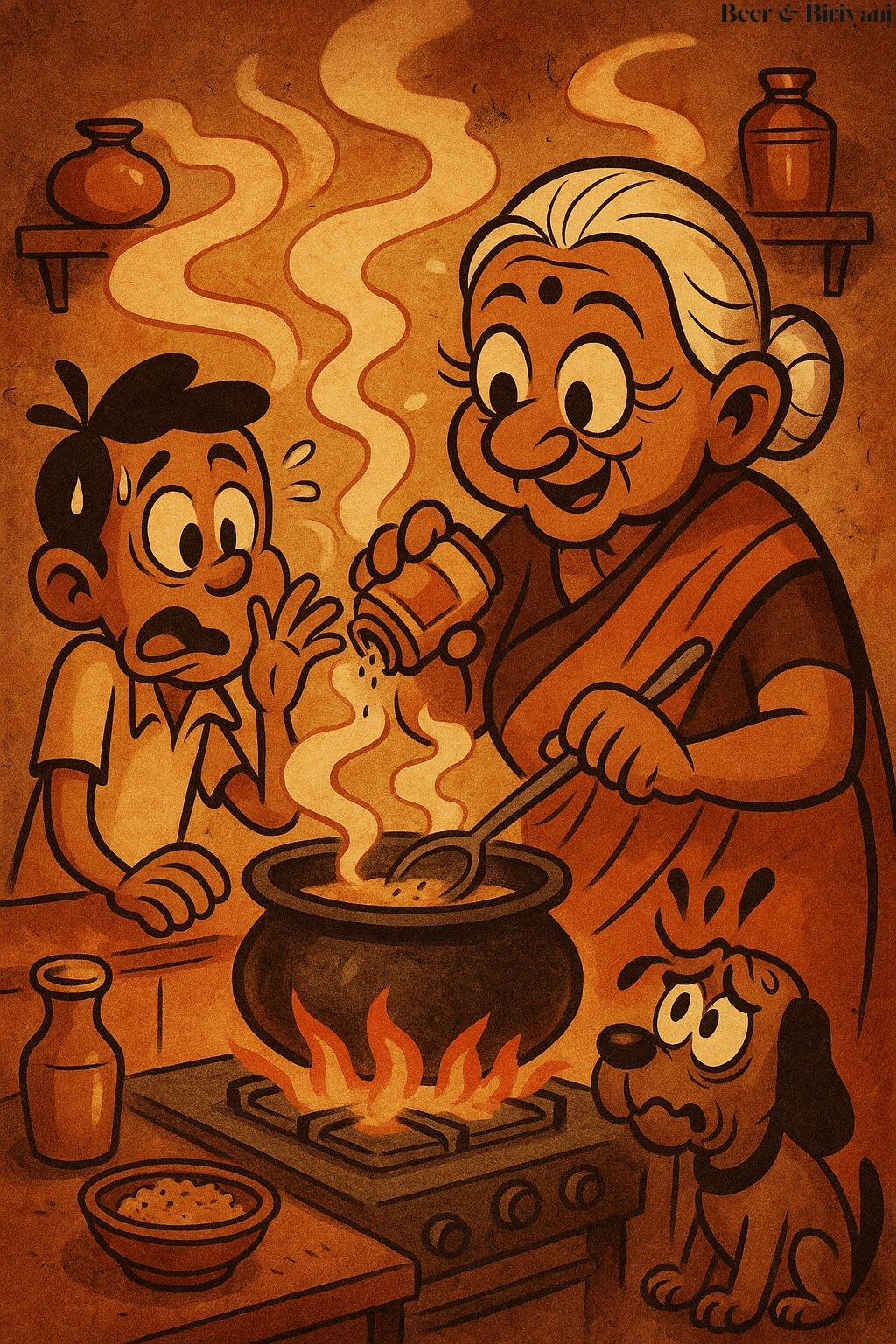The first time you encounter hing (asafoetida), it’s likely not by sight but by smell. And what a smell it is—pungent, earthy, almost sulfuric. Like garlic after a long, humid train ride. It’s the kind of aroma that enters your nose, exits through your eyes, and leaves a memory in your soul. My mother used to say, “If you can’t smell the tadka, you’ve probably forgotten the hing.” And you know what? She was right.
Hing is the seasoning equivalent of that one colleague who always speaks softly but says something deeply profound when they do. It’s rarely center stage. Most of the time, you won’t even see it. Just a pinch—maybe less—added to hot ghee or oil before the mustard seeds or cumin even get a chance to crackle. But once it’s there, you know it. You feel it in your nose, in your gut, in your memory.
A Spice With Passport Stamps
Contrary to what our kitchen shelves might suggest, hing doesn’t originate in India. It comes from the dried sap of the root of the Ferula plant, native to Iran and Afghanistan. Somewhere along the trade routes and culinary borrowings of the ancient world, it found its way to India, particularly into the kitchens of Brahmin communities that avoided garlic and onion. Hing stepped in—not as a weak substitute—but as an opinionated, bold replacement with enough aroma to carry an entire dish.
And carry it does. Whether in sambhar, kadhi, or dal tadka, hing plays the part of the ghost in the masala machine. You don’t always notice it first. But remove it from a dish and suddenly everything feels a bit too clean, too clinical, like someone forgot to turn the lights on in your curry.
The Tiniest Amount, the Loudest Voice
It took me years to learn how to use hing correctly. In our Mumbai kitchen, my mother would tap the tiniest bit into the ghee with a deliberate flick of the wrist. The trick, she said, was to “let it bloom.” You don’t just toss it in. You let the heat awaken it. Watch it foam slightly. Smell it assert itself. Then—and only then—do you add the rest of your tadka players.
In Austin, I tried it once in a rush. I didn’t let the oil heat properly. I added too much. The result was… dramatic. The apartment smelled like scorched socks. My dog barked. I had to air out the kitchen for an hour. Hing is not a forgiving spice. But it is a rewarding one.
Invisible, Yet Indispensable
What’s fascinating is how hing transforms after that brief moment in oil. The harshness mellows. The funk evolves. It becomes nutty, rich, rounded—something like leeks cooked in butter with a whisper of garlic. In a bowl of moong dal, it brings life. In a pot of rasam, it delivers the whisper of ancient kitchens. Hing doesn’t just season. It finishes. It resolves.
There’s also a strange reverence attached to it. The way we keep it in double-sealed containers. The way we use it sparingly, like we’re casting a spell, not cooking. The way it’s always added at the beginning of the recipe—but its effects are most noticeable at the end.
Digestive Drama and Ayurvedic Respect
Hing is more than a culinary powerhouse. In Ayurveda, it’s known as “hingvastaka”—a digestif, a de-bloater, a rescuer of heavy meals. It’s been used in folk medicine to treat colic, indigestion, and, charmingly, “wind.” (Yes, that kind.) My grandmother used to mix it with warm water and jaggery for stomachaches. Not the tastiest concoction, but frighteningly effective.
Even now, after I’ve had a particularly heavy dinner—say, chole bhature followed by regret—I’ll sip a little hing-water and feel balance return. Or maybe I just believe in it hard enough that it works. That’s the thing with Indian kitchen wisdom: it’s half spice, half psychology, and entirely effective.
The Smell of Home
Some smells follow you. Hing is one of them. It clings to ladles, spice tins, and the folds of your favorite kitchen towel. Even if you move halfway across the world, even if your pantry becomes a mosaic of new ingredients, the moment you open that small yellow jar with the red lid, you’re back. Back in your childhood kitchen. Back to a bowl of steaming dal. Back to the unexplainable comfort of something small making everything right.
Hing might never become trendy. You’ll never see it on a brunch menu or in a candle. It’s too smelly, too strange, too specific. But in the Indian kitchen, it’s untouchable. The quiet architect of flavor. The invisible line between “pretty good” and “can I have seconds?”
It’s proof that the best things don’t always need to be seen—or even liked at first sniff. Sometimes, they just need to be trusted.
Born in Mumbai, now stir-frying feelings in Texas. Writes about food, memory, and the messy magic in between — mostly to stay hungry, sometimes just to stay sane.












